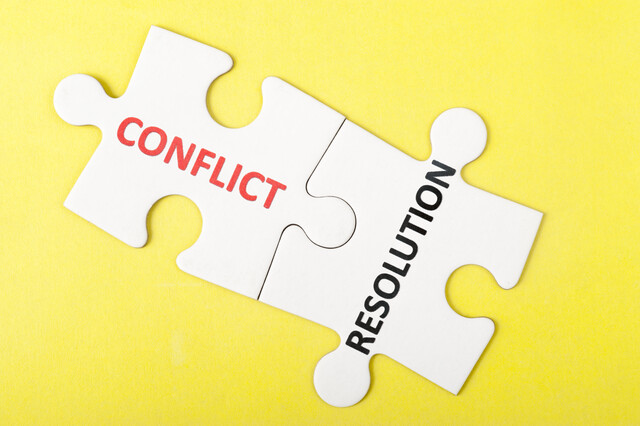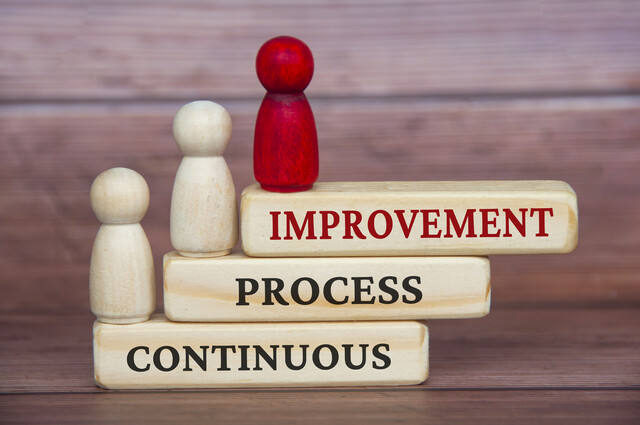Conflict Resolution
Master Peaceful Solutions for Life's Challenges

Imagine walking into tense meetings with unwavering confidence, equipped with insights that disarm hostility and cultivate understanding. In a world where conflict is inevitable, this course offers you the tools to harness its power for innovation and growth. You'll delve into the nuances of human interaction, uncovering the psychology that fuels conflict and the strategies to leverage it for better outcomes.
This isn't just about learning techniques--it's about evolving into the leader capable of navigating the stormiest seas with calm and clarity. You'll emerge with a renewed perspective, transforming disputes into enlightening conversations that propel your career forward. Take this leap toward mastery and distinction; it's not just a course--it's the gateway to becoming the architect of your professional destiny. Embark on this transformative experience now, and redefine your future.
7 Hours average completion time
0.7 CEUs
10 Lessons
17 Exams & Assignments
579 Discussions
10 Videos
15 Reference Files
85 Articles
Mobile Friendly
Last Updated December 2025
Imagine a world where workplace conflicts no longer hold you back but become opportunities for growth and collaboration. What if, instead of avoiding difficult conversations, you could navigate them with confidence and skill, turning potential disruptions into powerful moments of connection and productivity? This course offers you that transformation.
Welcome to Conflict Resolution in the Modern Workplace and Beyond, a journey that doesn't just teach you how to manage disagreements--it empowers you to turn them into catalysts for progress, stronger relationships, and personal growth. Whether you're managing teams, working closely with peers, or navigating customer and vendor relationships, conflict is inevitable. But here's the good news: with the right tools, conflict doesn't have to be negative. It can be a driving force behind innovation, communication, and deep understanding.
This course is different because it's not just about theory. You won't find outdated, cookie-cutter solutions here. Instead, you'll uncover practical strategies rooted in the realities of modern workplaces, backed by up-to-date research and real-world applications. You'll learn not only to resolve conflict but to thrive through it, recognizing that each challenge brings with it an opportunity to elevate your leadership, enhance your emotional intelligence, and build trust with those around you.
You'll dive into the psychology behind conflict--understanding the hidden causes of tension, from different worldviews shaped by upbringing, culture, and personality, to the power dynamics at play in organizational structures. You'll see how everyday decisions, from project deadlines to personal styles of communication, can either spark friction or foster collaboration. And through this understanding, you'll gain the confidence to handle any conflict, no matter how complex or sensitive, with poise and clarity.
But the magic of this course lies in how deeply it connects with your personal and professional growth. By mastering conflict resolution, you're not just solving problems--you're becoming the kind of leader and colleague everyone wants on their team. Imagine having the ability to diffuse tense situations, make everyone feel heard, and guide discussions towards solutions that benefit everyone. That's not just a career advantage--it's a life skill that will set you apart in every interaction.
What makes this course truly stand out is its approach to blending interpersonal insight with practical tools. We won't just tell you what to do; we'll walk you through the how in a way that's both intuitive and actionable. From mastering body language and tone of voice to understanding the subtle cues of unspoken tensions, you'll leave with a full toolkit for navigating even the trickiest conversations. You'll also explore advanced negotiation tactics, learn the art of compromise without losing integrity, and discover how to foster a culture of openness and mutual respect in any environment.
By the time you finish, you'll be prepared to lead meetings where every voice feels valued, tackle difficult conversations head-on without fear, and create an atmosphere where collaboration thrives, even when opinions differ. You'll gain the kind of respect that comes from being able to see the bigger picture, helping others find common ground while also ensuring your own needs and goals are met.
This course isn't just another option on your learning journey--it's the game changer you've been looking for. If you're ready to break through the barriers that conflict creates and emerge as a stronger, more capable leader, this course is the key.
Join us now, and unlock a future where conflicts no longer derail your success--they fuel it.
- Leadership through conflict
- Creative problem-solving
- Empathetic communication skills
- Proactive conflict management
- Building team cohesion
- Confidence in difficult conversations
- Effective mediation strategies
- Encouraging collaborative problem-solving
- Cultivating mutual respect
- Enhanced emotional intelligence
- Advanced negotiation techniques
-

Persuasion Techniques
-

Innovative Thinking Skills
-

Developing Great Social Skills
-

Workplace Violence: A Guide to Responding and Preventing
-

Serial Killers 101
-

Stress Management
-

Google Sheets
-

SalesForce 101
-

Nonfiction Writing 101
-

Workplace Sexual Harassment in the #MeToo Era
-

Business Branding 101
-

Anger Management Techniques
-

Leadership and Supervision
-

Employment Law Fundamentals
-

Creative Thinking Skills
-

Introduction to Abnormal Psychology
-

Resume Writing
-

Introduction to Ethics
-

Collaboration Skills
-

Vegetarian Living: Discover the World Beyond Meat
-

Human Resources Productivity Course Bundle
-

Running Effective Meetings
-

Leadership Skills for Managers
-

Kaizen 101 - An Introduction
-

Procurement Management